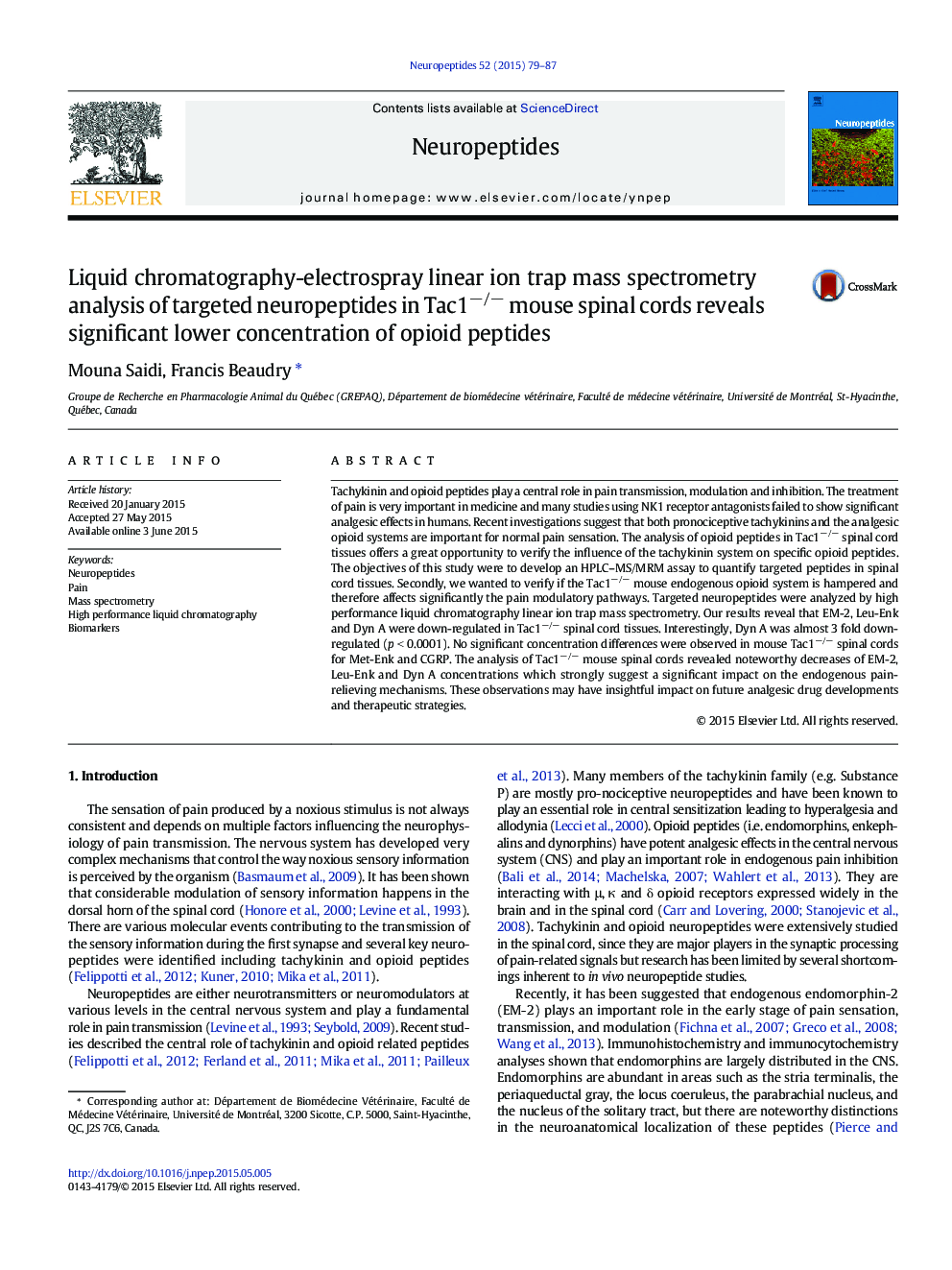| Article ID | Journal | Published Year | Pages | File Type |
|---|---|---|---|---|
| 2807974 | Neuropeptides | 2015 | 9 Pages |
Tachykinin and opioid peptides play a central role in pain transmission, modulation and inhibition. The treatment of pain is very important in medicine and many studies using NK1 receptor antagonists failed to show significant analgesic effects in humans. Recent investigations suggest that both pronociceptive tachykinins and the analgesic opioid systems are important for normal pain sensation. The analysis of opioid peptides in Tac1−/− spinal cord tissues offers a great opportunity to verify the influence of the tachykinin system on specific opioid peptides. The objectives of this study were to develop an HPLC–MS/MRM assay to quantify targeted peptides in spinal cord tissues. Secondly, we wanted to verify if the Tac1−/− mouse endogenous opioid system is hampered and therefore affects significantly the pain modulatory pathways. Targeted neuropeptides were analyzed by high performance liquid chromatography linear ion trap mass spectrometry. Our results reveal that EM-2, Leu-Enk and Dyn A were down-regulated in Tac1−/− spinal cord tissues. Interestingly, Dyn A was almost 3 fold down-regulated (p < 0.0001). No significant concentration differences were observed in mouse Tac1−/− spinal cords for Met-Enk and CGRP. The analysis of Tac1−/− mouse spinal cords revealed noteworthy decreases of EM-2, Leu-Enk and Dyn A concentrations which strongly suggest a significant impact on the endogenous pain-relieving mechanisms. These observations may have insightful impact on future analgesic drug developments and therapeutic strategies.
